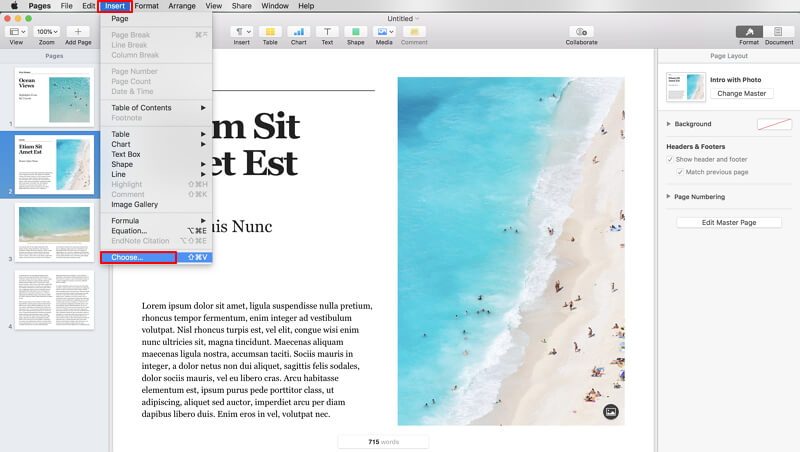-
Directly Open Cloud Document From Word For Mac카테고리 없음 2020. 2. 9. 19:10
The Drive plug-in for Microsoft® Office allows users working in Word®, Excel®, PowerPoint®, and Outlook® to open documents directly from Google Drive,. Better sharing and collaboration: Your locally synced OneDrive documents open directly from the cloud, allowing you to AutoSave, share, and collaborate easily. Add visual impact: Insert and edit Scalable Vector Graphics (SVGs) in your documents to add visual interest and retain a.
I've been using Office 2016 for Mac as my everyday office productivity suite since it went into beta earlier this year, and I don't understand why so many reviewers are fawning over it. It's a over Office 2008, and it has issues that show it should still be in beta. Maybe because it's been four years since Microsoft bothered to update Office for Mac (the stunningly unusable Ofice 2011, whose painful memory I long ago buried), and seven years since a serious update (Office 2008), people are grateful of anything. But I think we deserve better.
Looking to run office productivity apps on the go? Check out InfoWorld's comparisons of and. Considering the? Take these crucial steps before, during, and after for a successful migration. The good news is that the core of Office 2016 is solid - as it was in Office 2008 and Office 2003 before it.
Frankly, Office is a very mature product that doesn't need more features thrown at it, simply refinements and support for modern trends like cloud storage access. It's good that Microsoft is making the Office UI more common across its various versions. Office 2016 is based on the, which is also the basis for and the released earlier this week. (Office 2016 for Windows desktops is due in September, and the Windows Phone version by 2016.) But as Microsoft typically does on its Mac software, where it doesn't need to. Here are examples of that unfinished quality in Office 2016. The file-access blues When you open the app, there's a new file-browser window that takes you through an extra step to open files stored locally on your Mac or on cloud storage services other than Microsoft's own. It's annoying and unnecessary.
Fortunately, once you create a new document or open an existing one, you can access the standard OS X Open dialog boxes using the menu bar (not the Open button above the Office ribbon). But why add that extra step at each app launch? And why is it so slow to open the standard OS X Open dialog box once you click On My Mac? And why can't the Mac office file browser directly access Dropbox, like the iOS and Android versions can? It doesn't make sense to offer that ability on some platforms but not all. The file browser in Office 2016 for Mac forces users to take an extra, slow step to access local files as well as files stored in cloud services like iCloud Drive, Google Drive, Box, and Dropbox. Also, if Microsoft is going to force a file-browser window on users, it should at least allow multiple selection of the files it presents, so you can open multiple documents simultaneously - as the standard OS X and Windows Open dialog boxes do.
Furthermore, that Online Options button Microsoft sticks into the standard OS X Open dialog box is misleading: It simply opens the Office file browser, whose only online (cloud) options are OneDrive, OneDrive for Business, and SharePoint. That's naughty. OneDrive for Business is a total mess Wait, there's more! OneDrive for Business doesn't work on the Mac. The app has been in public beta since January (the production version is due by 2016) and has never worked reliably. It has crashed on startup for months and sometimes again later, for no obvious cause.

In the last week, it has stopped working altogether. Maybe that means Microsoft is merging OneDrive for Business into the OneDrive app, as it did. If so, that merger hasn't happened yet, so any corporate Mac user can't access files on OneDrive for Business from Office. I suspect this is more about bad software, as many users running various versions of OS X have been reporting frequent OneDrive for Business crashes for months. It's one of the least reliable pubic betas I've ever been a part of. The OneDrive for Business option in the Office apps' file-browser window doesn't work right, either.
I can see the two top levels of folders, but no files in them or folders below those two levels. However, they work perfectly fine on my iPad from both the OneDrive app and Office for iPad.
Thus, the Mac implementation is flawed, not the back-end service. I'm sure one day this OneDrive nonsense will all be worked out, but why isn't an operational workaround in place in the meantime? I believe it's part of. Crashes and freezes are common in the cloud Both the beta and production versions of Office 2016 for Mac crash fairly frequently in my usage. It mainly occurs when I'm editing files in Dropbox, the service I use to keep project files accessible across my devices and operating systems.

Directly Open Cloud Document From Word For Mac Free
It's as if a network or access interruption freaks out Office, and it crashes. Office 2008 doesn't have that issue, so I suspect it's related to Office 2016's nonstandard file-access mechanism. In my experience, the only other apps that show this same behavior are those in Adobe's Creative Suite, which also has a nonstandard file-access mechanism. For the record, I can't tell if this is an issue specifically with Dropbox or with any cloud service; I don't use my personal iCloud Drive for the same length of time or frequency to compare crash patterns in Office for that service. Ditto for other cloud services; my usage is too occasional to get an accurate read. Perhaps related is a frustrating behavior in Excel (since most spreadsheets I work on are in the cloud).
Periodically, the spreadsheet stops responding to data entry and mouse movements: I can't enter data, move from one cell to another, copy, paste, or pretty much anything else in the sheet itself. I have to save the file before it becomes responsive. I'm a frequent saver, so it's not like I have tons of stuff in memory that is overwhelming Excel. Plus, this doesn't happen in earlier versions of Excel.
For a company claiming to be cloud-first, Office 2016 is a poor standard-bearer. A few UI issues I also experienced some user-interface annoyances in Office 2016: I've remapped the Command-F shortcut in Word from Edit Find to the much more useful Edit Replace, but when I relaunch Word it reverts to Edit Find, though I've saved the keyboard preference in normal.dotm. Worse, when I look at the Customize Keyboard dialog box, it shows that Command-F is assigned to Edit Replace.
But Word doesn't honor that setting. I dislike the Office ribbon intensely, as it is both cryptic and hard to use. Fortunately, you can use the standard Mac menu bar and ignore the ribbon bar. But you must use the Styles pane, which wastes a lot of onscreen real estate (especially when working with documents side by side, even on a 27-inch monitor), yet does nothing to improve access to styles and other formatting. For the record, I'm not a fan of Apple's style drawer in iWork, either. How I wish I could get the Office 2003 style formatting bars back in Office 2016: It's both easier to use and much more space-efficient.
Thankfully, it’s possible to configure Office for Mac to launch directly with a new blank document instead of the Document Gallery. So let’s walk through how to start with a blank document in Word, Excel, and PowerPoint for Mac! Differences Between Office for Mac Applications First, let’s talk about a few minor differences between the three main Office for Mac applications. When I referenced “Document Gallery” above, that technically only refers to what it’s called in Word. Although it functions the same way (and this tip applies to all Office for Mac apps), this same window is called the “Workbook Gallery” in Excel and the “Start Screen” for PowerPoint. Configure Word, PowerPoint, and Excel to Open with a New Document The Document Gallery may be helpful for some, but as I said, not so much for me.
So to get rid of it and start with a new document by default, open Word (or Excel or PowerPoint), and then choose Program Name Preferences from the menu bar at the top of the screen. When the Preferences window opens, click General. For Microsoft Word, find the option labeled Show Word Document Gallery when opening Word and uncheck it: For Excel and PowerPoint, follow the same steps, except remember that this window has a different name in each application as referenced above. Once you’ve unchecked the corresponding box in your Office for Mac applications, you can test it out by quitting and then relaunching them. This time, each app should open directly to a new blank document instead of the Document Gallery or equivalent. How to Access the Document Gallery Again OK, so you’ve prevented the Document Gallery from showing up when you launch Word, Excel, or PowerPoint.
But what if you actually want to see this screen again once you’ve made this change? To do so, just select File New From Template from the application’s menu bar, or use the keyboard shortcut Shift-Command-P. What About Older Versions of Office? The steps in this tip apply to the latest version of Office as of the date of publication, which is Office 2016.
What about older versions of Office, such as Office for Mac 2011? This version also has a Document Gallery, but it works a bit differently.
To launch Office for Mac 2011 applications directly with a blank new document, find and check the box labeled Don’t show this in each Office application. Just like with Office for Mac 2016, with all three 2011 versions you can see the Document Gallery again after making this change by selecting File New from Template from the menu bar or by using the keyboard shortcut Shift-Command-P.
Launching With a New Document in iWork Finally, if you prefer to use Apple’s iWork suite —, and — instead of Microsoft Office, there’s a similar method to force those apps to launch directly with a new document (Apple calls its version of the Document Gallery the “Template Chooser”). Just open Pages, Numbers, or Keynote and select Program Name Preferences from the menu bar. On the General tab of the Preferences window, find the option labeled For New Documents and select Use template: Blank. As you may have guessed, if you prefer to launch these apps with your own custom template instead of a blank document, just click the Change Template button and select your desired document template. Configuring your productivity apps to launch directly to a new document seems like such a minor change, but I gotta tell you that it makes me happy to not have to pick that blank template every time I open Word.
That’s precious time that I could be using for more important things! Not that I do any important things, you understand, but at least I could. Want news and tips from TekRevue delivered directly to your inbox? Sign up for the TekRevue Weekly Digest using the box below. Get tips, reviews, news, and giveaways reserved exclusively for subscribers.